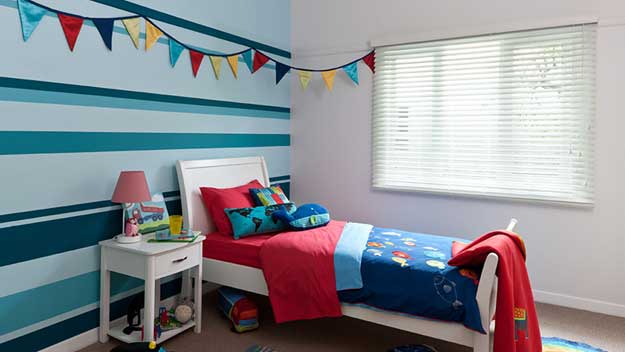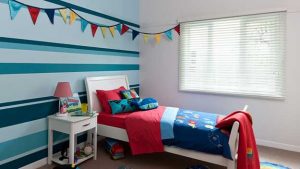Every purchase made online is encrypted with a high level of security you’ve come to expect. Your private information is never shared nor sold, so you can buy with confidence. You can also visit our store if you are in the St. Louis area.

Are you having a hard time getting your child to go to sleep? Does it seem like you have tried everything? For everyone a good night’s sleep relies on the 5 senses, which means everything is important. From what they hear to what they smell, all of these can influence a child’s rest – even what your child sees before going to sleep. If s/he is having difficulty falling to sleep, then perhaps it is time to rethink the color scheme in the bedroom.
Colors have an energy: All colors are ascribed a different type of energy, and promote feelings and emotions when people are surrounded by them – excitement, happiness, peace and calm, etc.
- Red is described as having a high energy. It also promotes aggression, power, and irritability. The color red will cause your child to be overly stimulated, which makes it a poor choice for the bedroom
- Orange helps increase one’s energy levels as well as gives feelings of excitement. Orange is a great choice for your home gym or a play room, or anywhere in which a lot of activity is encouraged – not for a bedroom, of course.
- Yellow promotes feelings of happiness, optimism and joy. However, too much yellow in a single room promotes tension, so small amounts, muted, and/or pale yellows in the bedroom are best.
 Green promotes the feelings of relaxation, nature, and, of course, rest. This is one of the colors you definitely want to use when painting for your child’s room. Another way to add green to a room is with small plants, especially if s/he is old enough to care for them.
Green promotes the feelings of relaxation, nature, and, of course, rest. This is one of the colors you definitely want to use when painting for your child’s room. Another way to add green to a room is with small plants, especially if s/he is old enough to care for them.- Blue is proven to have the opposite effect of the color red, meaning that this color is relaxing, calming and offers comfort for your child. It will lower the heart rate and blood pressure. The shade, however, is also important. Darker blues such as navy will promote depression. So the best choices in blue colors are lighter shades, perhaps a periwinkle.
- Purple of darker shades are usually matched with sophistication. Lighter shades are associated with rest and relaxation, making the lighter and softer tones of purple a much better fit for a child’s room
- Pink is like purple. This color truly depends on the shades you choose. Do not choose the dark or intense shades for your child’s room, as those are moving closer to red and can add stimulation.
- White promotes feelings of peacefulness, however, it is always good to keep in mind that a child’s room should have at least a hint of color. Splashes of accents colors on a white wall can be stunning, and a palette of a variety of calm-inducing colors would be a great idea.
- Brown promotes calm and coziness. Unfortunately, brown would not be viewed as a good color choice for a young child’s room, because it also brings in a sophisticated tone.
Color truly does influence many things, including rest. By choosing the colors that are guaranteed to promote rest and relaxation, you may be able to promote those emotions and feelings that assist sleep. And, if I had a child who had difficulty falling to sleep at night, I would probably try changing to the “calmer” colors. It certainly is worth a try!
